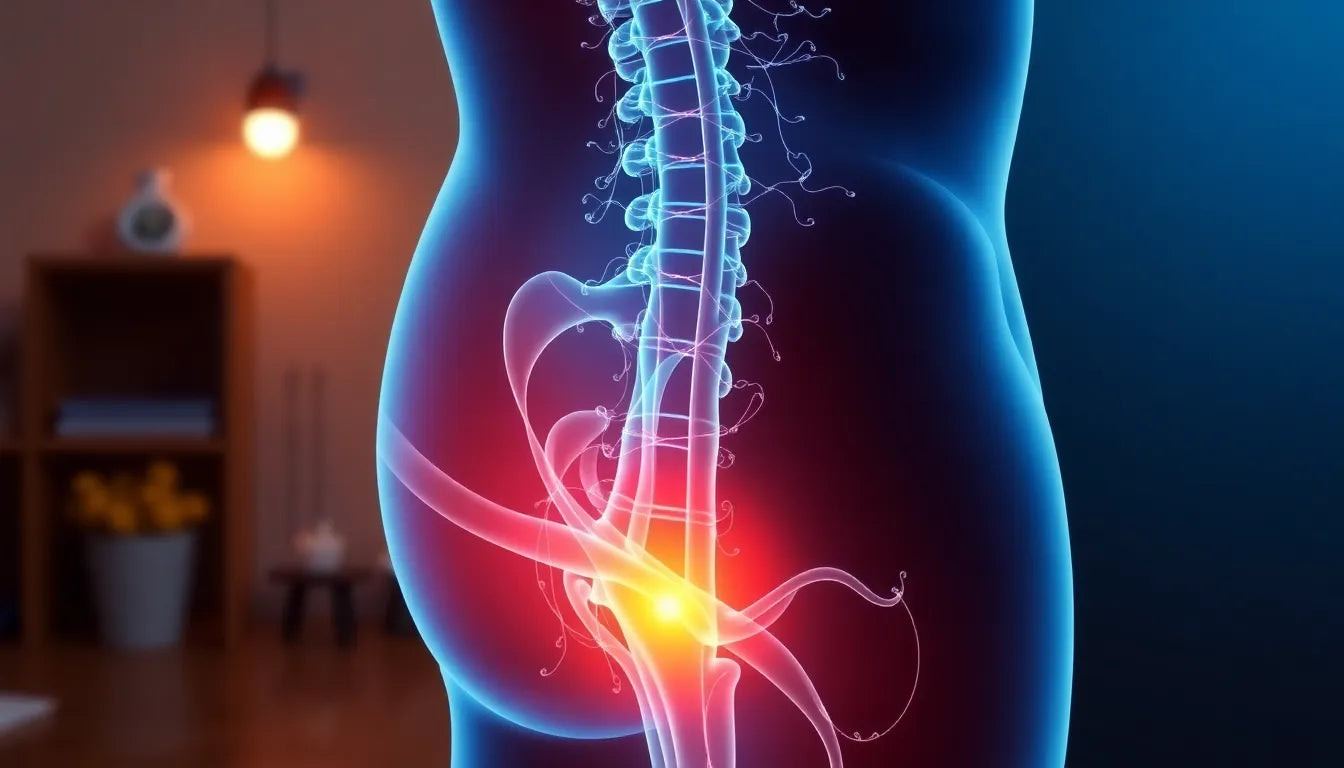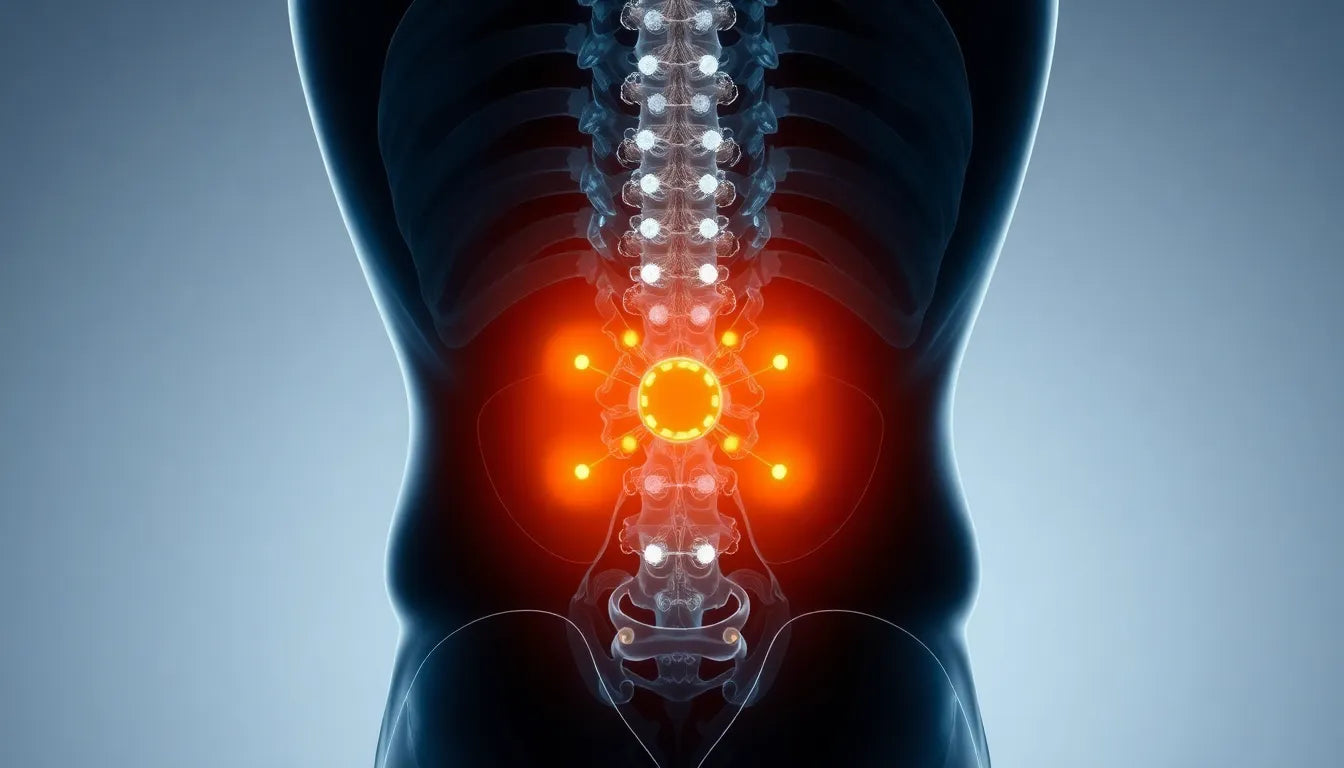Sciatica is a condition that many people experience, yet it often goes misunderstood. At its core, sciatica involves discomfort that originates from the irritation or compression of the sciatic nerve, the longest nerve in the human body. This nerve travels from the lower back down through the hips, buttocks, and each leg. Common symptoms include persistent lower back pain, sharp leg pain, and tingling sensations that can disrupt daily activities. The most frequent culprits behind this nerve irritation are herniated discs and spinal stenosis, which create pressure on the nerve, leading to the characteristic pain.
The impact of sciatica on daily life
Living with sciatica can be a challenging experience. The pain and discomfort can significantly impair one's ability to perform everyday tasks, from walking and sitting to sleeping. This disruption can lead to a decrease in overall quality of life, as individuals struggle to maintain their usual level of activity. The constant pain can also affect mental health, contributing to stress and anxiety. Therefore, finding effective treatment options is crucial for those suffering from sciatica, as it can restore mobility and improve daily functioning.
Purpose of exploring sciatica treatment options
The purpose of this blog post is to delve into the various treatment options available for sciatica, providing readers with a comprehensive guide to achieving lasting relief. Whether you're exploring conservative approaches like physical therapy and acupuncture or considering more advanced interventions such as surgery, understanding your options is key to making informed decisions about your health. By shedding light on these treatments, we aim to empower you to take charge of your sciatica and work towards a pain-free life.
conservative treatment options for sciatica relief
When it comes to managing sciatica, conservative treatment options often serve as the first line of defense. These approaches focus on alleviating pain and improving function without the need for surgical intervention. One of the most effective methods is physical therapy, which involves tailored exercise programs designed to improve mobility, strengthen the muscles supporting the spine, and reduce pressure on the sciatic nerve. Physical therapists work closely with patients to develop routines that target specific areas of concern, helping to restore normal movement patterns and reduce pain.
Chiropractic care also plays a significant role in managing sciatica. Chiropractors employ techniques such as spinal adjustments and soft tissue mobilization to relieve pressure on the sciatic nerve. These adjustments can help realign the spine, improve posture, and enhance overall spinal health, which may lead to a reduction in sciatica symptoms.
Another alternative treatment gaining recognition is acupuncture. This ancient practice involves inserting thin needles into specific points on the body to stimulate energy flow and promote healing. Meta-analyses have shown that acupuncture can be an effective and safe treatment for sciatica, providing pain relief and improving function for many patients.
In addition to these professional treatments, self-care measures can be beneficial in managing sciatica pain. Simple strategies such as applying hot or cold packs to the affected area can provide temporary relief by reducing inflammation and soothing sore muscles. Additionally, modifying activities to avoid movements that exacerbate pain can help manage symptoms and prevent further irritation of the sciatic nerve.
exploring minimally invasive procedures
For individuals who do not experience sufficient relief from conservative treatments, minimally invasive procedures may offer an effective alternative. One such option is epidural steroid injections. These injections deliver anti-inflammatory medication directly to the area around the sciatic nerve, helping to reduce inflammation and alleviate pain. While the relief provided by these injections is often temporary, they can be a valuable tool in managing acute flare-ups and improving function.
Radiofrequency ablation (RFA) is another minimally invasive procedure used to treat chronic sciatica pain. This technique involves using heat generated by radio waves to disrupt nerve function, thereby reducing pain signals transmitted to the brain. RFA can provide significant pain relief for individuals with persistent sciatica, allowing them to engage more fully in rehabilitation and physical therapy.
surgical interventions for severe cases
When conservative and minimally invasive treatments fail to provide adequate relief, surgical intervention may be considered. One of the most common surgical procedures for sciatica is a microdiscectomy. This surgery involves removing a portion of a herniated disc that is pressing on the sciatic nerve, providing immediate relief from pain and restoring normal nerve function. Microdiscectomy is generally recommended for individuals with severe symptoms or significant nerve compression that has not responded to other treatments.
The field of sciatica treatment is also witnessing increased research interest in various surgical approaches, including nerve grafts and nerve conduits. These innovative techniques aim to repair and regenerate damaged nerves, offering potential new avenues for treating sciatica in the future.
In conclusion, the journey to finding effective sciatica relief involves exploring a range of treatment options. From conservative approaches like physical therapy and chiropractic care to advanced interventions such as surgery, understanding these options empowers individuals to make informed decisions about their health. By tailoring treatment plans to individual needs, patients can achieve lasting comfort and improved quality of life.
research advancements and market trends in sciatica treatment
As the medical community continues to explore new avenues for treating sciatica, several emerging treatments show promise in alleviating symptoms and improving patient outcomes. Recent research has focused on nerve regeneration therapies, which aim to repair damaged nerves and restore their function. Additionally, advancements in neuropathic pain alleviation and muscle atrophy repair pathways are paving the way for more effective interventions. These innovative approaches highlight the dynamic nature of sciatica treatment research and the potential for new, more effective therapies in the future.
The global sciatica treatment market is also experiencing significant growth, reflecting increased interest and investment in this field. Valued at $678 million in 2021, the market is projected to reach $991.3 million by 2031, growing at a compound annual growth rate (CAGR) of 3.9%. This expansion indicates a rising demand for effective sciatica treatments and underscores the importance of continued research and development in this area.
comparing traditional and alternative treatments
When considering treatment options for sciatica, it is essential to weigh the effectiveness of traditional medical approaches against alternative therapies. Traditional treatments, such as physical therapy and medication, are well-established and widely used for managing sciatica symptoms. However, alternative treatments like acupuncture have gained recognition for their ability to provide pain relief and improve function. Studies have shown that acupuncture can be as effective as traditional methods, offering a viable option for those seeking non-conventional treatment paths.
The choice between traditional and alternative treatments often depends on individual preferences, the severity of symptoms, and the specific underlying causes of sciatica. It is crucial for patients to consult with healthcare professionals to determine the most suitable treatment plan tailored to their needs.
preventing recurrence and managing sciatica long-term
Preventing the recurrence of sciatica is a vital aspect of long-term management. To reduce the risk of future episodes, individuals are encouraged to maintain a healthy weight, as excess weight can place additional pressure on the spine. Practicing good posture, especially when sitting or standing for extended periods, can also help alleviate stress on the sciatic nerve.
Engaging in regular exercise, particularly activities that strengthen the core and improve flexibility, is another effective strategy for preventing sciatica recurrence. Exercises such as swimming, yoga, and pilates can enhance overall spinal health and reduce the likelihood of nerve compression. By incorporating these lifestyle modifications, individuals can better manage their sciatica and enjoy a higher quality of life.
frequently asked questions
What is the fastest way to relieve sciatica pain?
While immediate relief methods such as hot/cold packs or over-the-counter pain medication can help, physical therapy and minimally invasive procedures like epidural steroid injections may offer more sustained relief.
When should I consider surgery for sciatica?
Surgery is typically considered when conservative treatments fail to provide relief, or if there is significant nerve compression leading to severe pain or loss of function.
Can sciatica be permanently cured?
While some individuals may experience long-term relief, sciatica can recur. Ongoing management strategies, including exercise and lifestyle modifications, are crucial for preventing recurrence.
Is acupuncture effective for sciatica?
Yes, studies and meta-analyses have shown acupuncture to be an effective and safe treatment option for managing sciatica pain.
How long does it take to recover from sciatica?
Recovery time varies depending on the treatment approach and individual circumstances. Conservative treatments may take weeks to months, while surgical interventions could lead to quicker relief but require a recovery period.
Sources
- Mayo Clinic. "Sciatica - Diagnosis and Treatment."
- StatPearls. "Diagnosis and Treatment of Sciatica." NCBI.
- StatPearls. "Sciatica." NCBI Bookshelf.
- Frontiers in Neuroscience. "Emerging Treatments for Sciatica: A Review."
- PMC. "Conservative Care and Surgical Interventions for Sciatica."
- PMC. "Acupuncture for Sciatica: A Meta-Analysis."
- PMC. "Surgical Interventions and Research Interest in Sciatica."
- Market Research. "Global Sciatica Treatment Market Analysis."


















